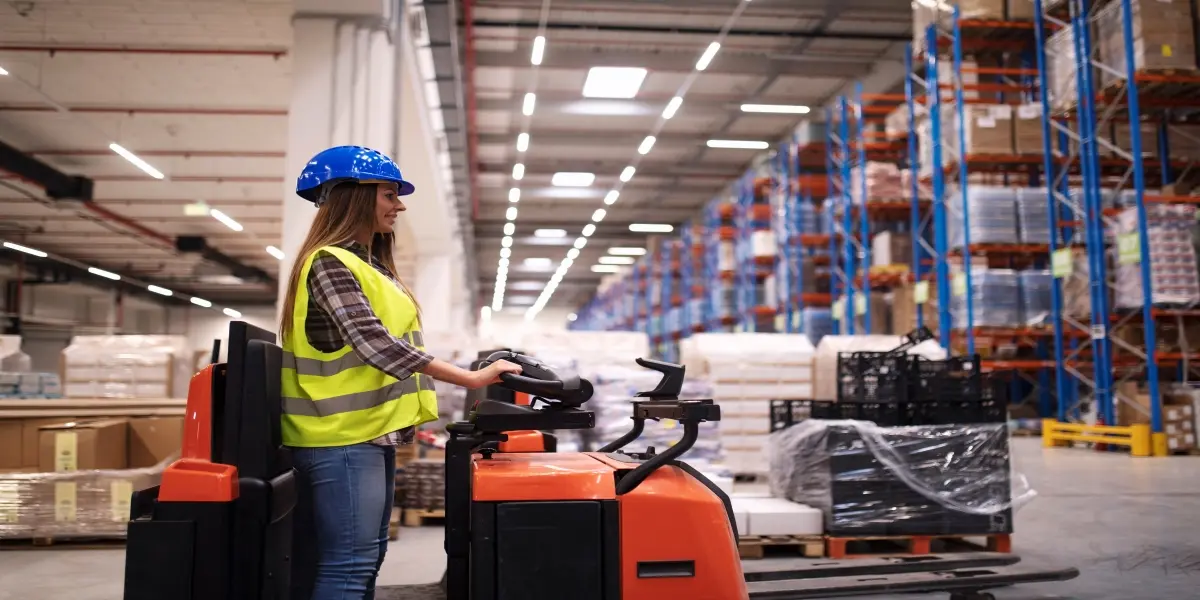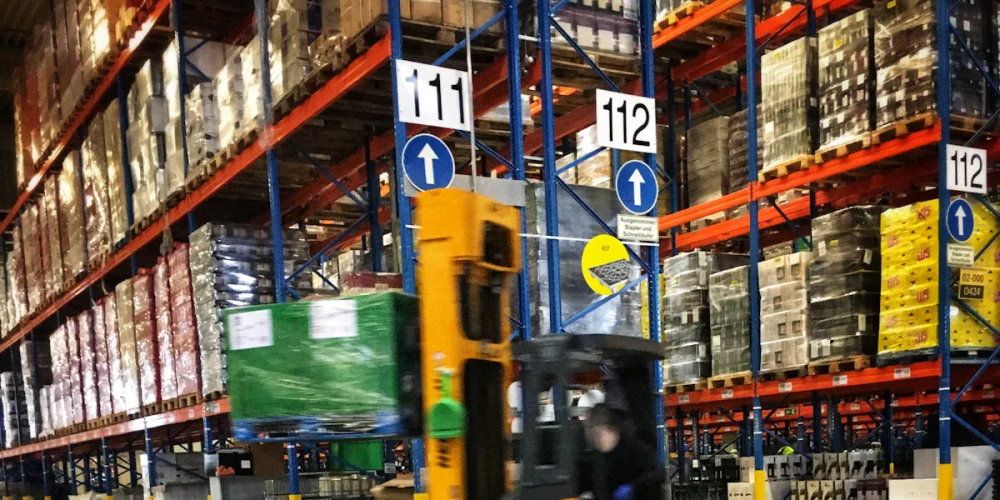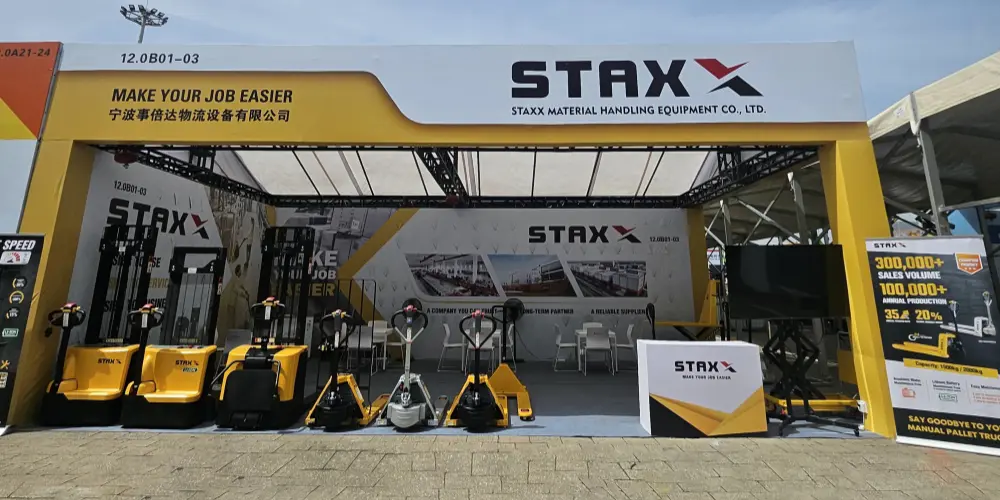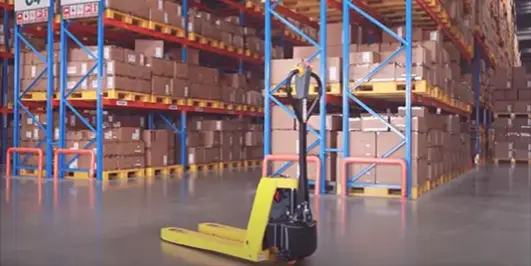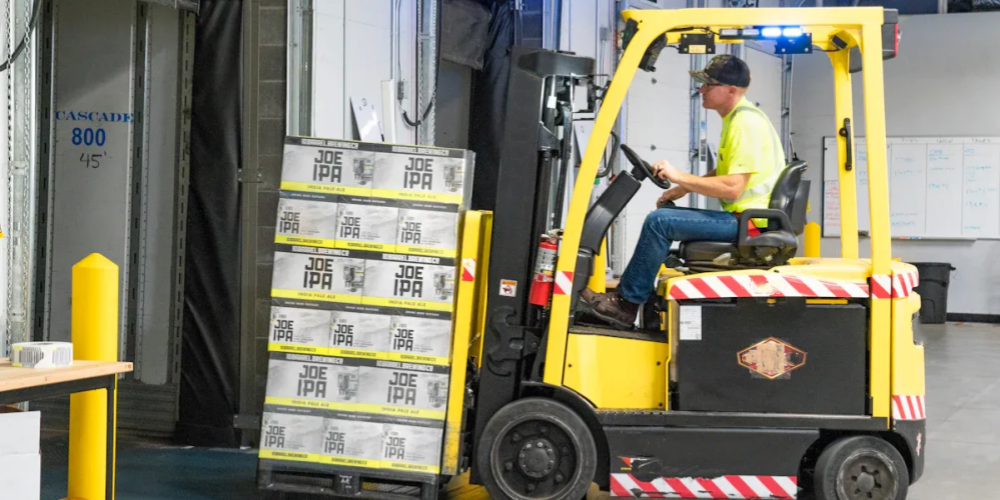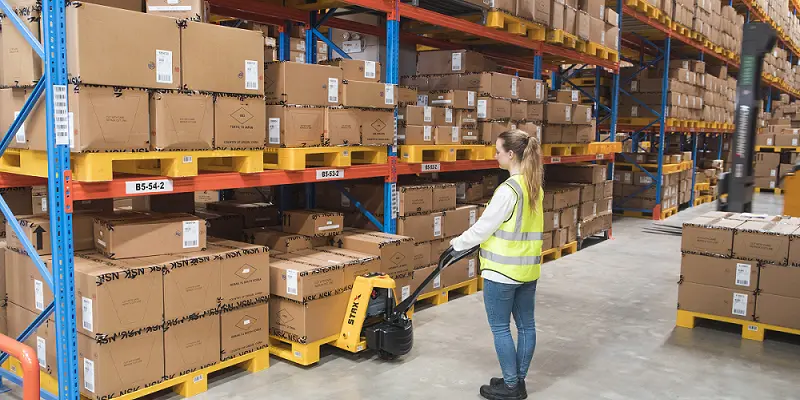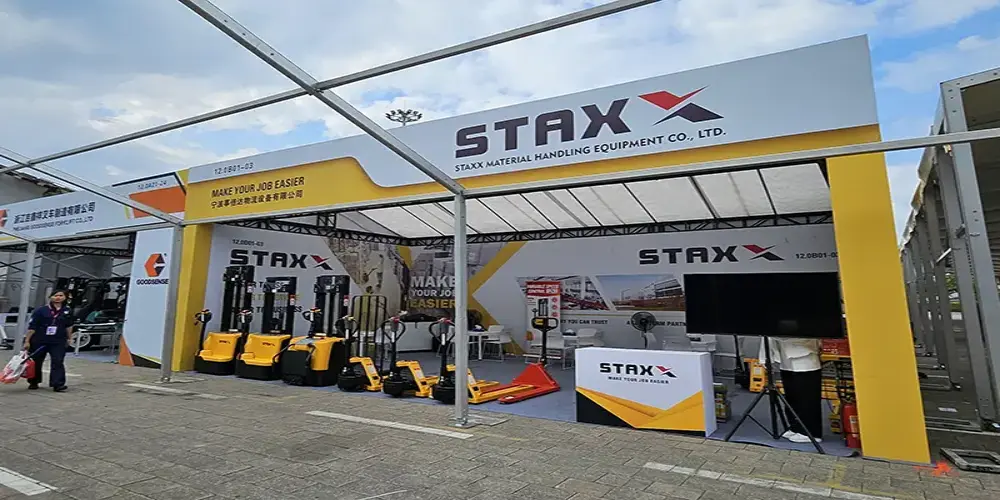Electric Pallet Truck Makers Face Challenges and Opportunities

I see Electric Pallet trucks transforming logistics and supply chain operations. They streamline material handling tasks, offering efficiency and sustainability. As an electric powered pallet truck manufacturer, I recognize the volatile industrial truck market presents both hurdles and growth opportunities. Adapting to these dynamics is essential for success in this competitive landscape.
Key Takeaways
- Electric pallet trucks help save time and energy in warehouses.
- Better batteries, like lithium-ion, boost performance and cut costs.
- Online shopping growth increases the need for these trucks, giving makers a chance to improve and sell more.
Market Overview
Trends Driving Electrification in Material Handling
Electrification is reshaping material handling systems. I see advancements in AI and machine learning revolutionizing autonomous forklifts. These technologies allow forklifts to make real-time decisions, optimizing routes and boosting productivity. Lithium-ion batteries are another game-changer. They offer longer life spans and faster charging compared to traditional lead-acid batteries, setting new industry standards.
Key innovations driving this trend include:
- High-frequency charging solutions that improve power conversion efficiency.
- IoT-enabled smart warehousing systems for real-time tracking.
- Automated guided vehicles (AGVs) that streamline workflows.
Electrification is also influencing legacy systems. Companies are replacing older conveyor systems with energy-efficient alternatives that operate only when moving cargo. Lightweight materials and additive manufacturing further enhance efficiency and sustainability.
Sustainability and Its Role in Shaping Demand
Environmental consciousness is reshaping industrial equipment demand. Electric pallet jacks are gaining traction due to their energy efficiency and sustainable construction. These features align with companies' goals to reduce their environmental footprint.
The heavy-duty electric pallet truck market is growing rapidly. This growth stems from advancements in battery technology, increased demand for electric vehicles, and government regulations promoting green technologies. As an electric powered pallet truck manufacturer, I see businesses adopting these trucks to boost productivity while minimizing emissions.
Automation’s Influence on Electric Pallet Trucks
Automation is transforming logistics operations. Electric pallet trucks increase throughput rates by up to 30%, significantly improving efficiency over manual handling methods. They also reduce workplace injuries related to repetitive strain by 25%.
These trucks integrate seamlessly into automated systems, enhancing workflows and reducing downtime. As automation continues to evolve, I expect electric pallet trucks to play an even greater role in modern warehouses and distribution centers.
Key Challenges for Electric Powered Pallet Truck Manufacturers
Supply Chain Disruptions and Material Shortages
Supply chain disruptions have become a significant hurdle for manufacturers. I have observed extended lead times for global lift truck production, which now range from 22 to 28 weeks, compared to the previous 12 to 16 weeks. This delay stems from material shortages, particularly in automotive-grade steel and semiconductors. The price of automotive-grade steel surged by 42% year-over-year in Q1 2023, increasing production costs by 18-22% for combustion engine forklifts. Electric Forklift production faces even greater challenges due to the higher semiconductor demand for advanced models.
Logistics costs have also skyrocketed. Ocean freight costs for containers from Shanghai to Los Angeles are now 317% higher than pre-pandemic levels. Labor costs have risen as well, with a 22% wage inflation reported for skilled workers in U.S. forklift assembly plants since 2020. These factors collectively strain the ability of an electric powered pallet truck manufacturer to maintain competitive pricing and timely deliveries.
Rising Production Costs and Inflationary Pressures
Inflationary pressures have significantly impacted production costs. Tariffs have increased import costs for certain forklift components by 19-27%, further complicating cost structures. The average selling price for Class III electric forklifts has risen by 29% from 2020 to 2023. This reflects the adjustments manufacturers have made to offset rising material and labor costs.
The surge in raw material prices, such as a 30% increase in steel and a 20% increase in aluminum, adds to the financial burden. These challenges require manufacturers to adopt cost-saving measures without compromising quality. I believe that streamlining production processes and investing in local supply chains can help mitigate these pressures.
Regulatory Compliance and Environmental Standards
Regulatory compliance presents both challenges and opportunities. For example, California's Warehouse Indirect Source Rule (ISR) mandates warehouses to offset emissions from medium- and heavy-duty trucks. This regulation incentivizes the adoption of electric equipment, including pallet trucks. As a result, manufacturers must design products that meet these stringent environmental standards.
Safety standards like UL 583 also influence production. This standard focuses on preventing electrical hazards and ensuring fire safety for electric battery-powered industrial trucks. Compliance with such regulations ensures operational assurance and market access but requires additional investment in research and development.
| Aspect | Description |
|---|---|
| Standard Name | UL 583 |
| Focus | Safety and fire requirements for electric battery-powered industrial trucks |
| Key Requirements | Prevention of electrical hazards, fire safety, regulatory compliance, market access, operational assurance |
| Impact on Production | Ensures safety and functionality, influencing design and manufacturing processes of electric pallet trucks |
Intense Market Competition and Price Sensitivity
The electric pallet truck market is highly competitive. Manufacturers face pressure to balance innovation with affordability. Market research highlights that 85% of stakeholders globally consider rising material costs a significant issue. This includes a 30% increase in steel prices and a 20% increase in aluminum prices.
Price sensitivity among customers adds another layer of complexity. While automation and sustainability trends drive demand, they also raise expectations for cost-effective solutions. I see this as an opportunity for manufacturers to differentiate themselves through strategic partnerships and innovative designs. By focusing on compact, versatile solutions, an electric powered pallet truck manufacturer can address customer needs while staying competitive.
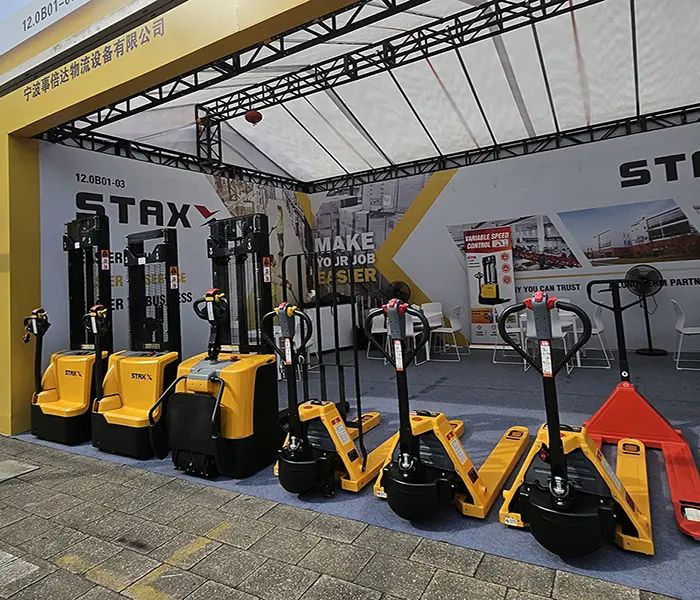
Emerging Opportunities for Electric Powered Pallet Truck Manufacturers
Growth of E-Commerce and Warehouse Expansion
E-commerce has revolutionized the logistics landscape, creating unprecedented demand for efficient material handling solutions. Businesses now prioritize faster order fulfillment to meet customer expectations. This shift has significantly increased the need for electric pallet trucks in warehouses.
The warehouse automation market is projected to reach $55 billion by 2030, driven by the complexities of online shopping. Managing high volumes of picking, packing, and shipping requires advanced equipment. Electric pallet trucks play a pivotal role in streamlining these operations. According to LogisticsIQ, e-commerce has grown into a $5 trillion logistics industry, with warehouse automation expected to grow at a compound annual rate of 15% from 2024 to 2030. This growth underscores the importance of adopting automated solutions to handle the surge in demand.
As an electric powered pallet truck manufacturer, I see this as a golden opportunity. By aligning product offerings with the needs of expanding warehouses, manufacturers can capture a significant share of this growing market.
Advancements in Battery Technology and Efficiency
Battery technology has made remarkable strides, transforming the performance of electric pallet trucks. Lithium-ion batteries now dominate the market due to their superior efficiency and durability. These batteries offer a charging efficiency of 98% and a roundtrip efficiency of 87%, significantly outperforming traditional lead-acid batteries.
| Metric | Lithium-Ion Batteries | Lead-Acid Batteries |
|---|---|---|
| Charging Efficiency | 98% | N/A |
| Roundtrip Efficiency | 87% | N/A |
| Energy Losses During Charging | Reduced | N/A |
Lithium-ion batteries also require less energy to recharge, thanks to their higher charge acceptance rates. This advancement reduces downtime and enhances productivity in warehouse operations. The electric forklift truck market has embraced this technology for its shorter charging times and longer lifespan.
I believe these innovations present a unique opportunity for manufacturers to differentiate their products. By integrating cutting-edge battery technology, manufacturers can offer solutions that meet the growing demand for efficiency and sustainability.
Government Incentives for Electrification and Green Initiatives
Governments worldwide are promoting green initiatives to combat climate change. These policies encourage the adoption of electric equipment, including pallet trucks. Incentives such as tax credits, grants, and subsidies make it easier for businesses to transition to electric-powered solutions.
For example, regulations like California's Warehouse Indirect Source Rule (ISR) require warehouses to offset emissions from medium- and heavy-duty trucks. This creates a favorable environment for electric powered pallet truck manufacturers to innovate and expand their market presence.
I see these incentives as a catalyst for growth. By aligning product development with government policies, manufacturers can not only comply with regulations but also gain a competitive edge in the market.
Increasing Demand for Compact and Versatile Solutions
The demand for compact and versatile electric pallet trucks is on the rise. Businesses seek equipment that can navigate tight spaces and adapt to various operational needs. This trend is particularly evident in urban warehouses and small-scale facilities where space is limited.
| Evidence Description | Key Insights |
|---|---|
| Projected Market Growth | The global pallet truck market is expected to grow steadily due to e-commerce growth and increased warehousing activities. |
| Adoption of Electric Solutions | Key industries are investing in electric pallet trucks to enhance productivity and reduce downtime. |
| Regional Growth | The Asia-Pacific region is experiencing rapid growth in pallet truck adoption due to industrialization and e-commerce penetration. |
Compact designs and versatile features allow electric pallet trucks to address these challenges effectively. As an electric powered pallet truck manufacturer, I recognize the importance of developing solutions that cater to these specific needs. By focusing on innovation and adaptability, manufacturers can tap into this growing segment and drive long-term success.
Case Studies or Examples
Staxx’s Approach to Overcoming Supply Chain Challenges
Supply chain disruptions have tested the resilience of manufacturers worldwide. At Staxx, I’ve seen firsthand how strategic planning can mitigate these challenges. For example, we adopted distributed order management systems to streamline operations. This approach reduced lead times and improved order fulfillment rates.
Other manufacturers have also implemented innovative strategies:
| Case Study | Key Strategies Employed | Outcomes |
|---|---|---|
| Oracle Solutions | Distributed order management | Increased order fulfillment speed and reduced costs |
| Capgemini Insights | Analyzed common fulfillment challenges | Improved customer service and satisfaction levels |
These examples highlight the importance of adaptability. By leveraging technology and data-driven insights, manufacturers can overcome supply chain bottlenecks and maintain operational efficiency.
Innovations by Staxx in Battery Technology
Battery technology has revolutionized electric pallet trucks, and Staxx has embraced these advancements. The transition from lead-acid to lithium-ion batteries has transformed product performance. Lithium-ion batteries charge faster, last longer, and require minimal maintenance. This innovation enhances efficiency and reduces operational costs for businesses.
Key improvements include:
- Faster charging: Lithium-ion batteries charge in 2-8 hours compared to 8-12 hours for lead-acid batteries.
- Extended lifespan: They last up to 2,000 cycles, doubling the operational life of lead-acid batteries.
- Reduced maintenance: Lithium-ion batteries require less upkeep, lowering total ownership costs.
| Feature | Lead-Acid Batteries | Lithium-Ion Batteries |
|---|---|---|
| Average Charge Time | 8-12 hours | 2-8 hours |
| Typical Operational Life | 500-1,000 cycles | 1,500-2,000 cycles |
| Maintenance Needs | High | Low |
| Energy Efficiency Improvement | N/A | 30-50% improvement |
These advancements position Staxx as a leader in innovation, enabling us to deliver high-performing solutions to our customers.
Success Stories of Manufacturers Leveraging E-Commerce Growth
E-commerce growth has reshaped logistics, creating opportunities for manufacturers. At Staxx, I’ve observed how aligning product offerings with warehouse expansion trends can drive success. For instance, our compact electric pallet trucks have gained traction in urban warehouses where space is limited.
Other manufacturers have leveraged e-commerce growth effectively. Businesses that adopted automated solutions reported faster order fulfillment and reduced downtime. This aligns with the projected $55 billion warehouse automation market by 2030. By focusing on compact and versatile designs, manufacturers can cater to the unique needs of e-commerce-driven warehouses.
📦 Tip: Investing in automation and space-efficient equipment can help manufacturers capitalize on the e-commerce boom.
As an electric powered pallet truck manufacturer, I see this as a pivotal opportunity to innovate and expand market presence.
Future Outlook
Predicted Market Growth and Expansion
The electric pallet truck market is poised for remarkable growth. I’ve observed that the global market size is projected to expand significantly, driven by increasing demand for efficient material handling solutions. For instance, the market is expected to grow from $4.76 billion in 2023 to $8.09 billion by 2030. This represents a compound annual growth rate (CAGR) of 7.85%.
| Year | Market Size (USD Billion) | CAGR (%) |
|---|---|---|
| 2023 | 4.76 | N/A |
| 2030 | 8.09 | N/A |
Additionally, the broader warehouse automation market, which includes electric pallet trucks, is forecasted to reach $61.19 billion by 2029, growing at a CAGR of 8.7%. These figures highlight the immense opportunities for manufacturers to innovate and capture market share.
Innovations on the Horizon for Electric Pallet Trucks
Emerging technologies are reshaping the future of electric pallet trucks. I see smart technologies and operator assist features as game-changers. These innovations enhance efficiency and reduce physical strain on workers. For example, autonomous navigation and predictive maintenance provide real-time analytics, improving operational uptime.
The market’s focus on ergonomics and handling is also evident in new models like the Linde MT18 Electric Pallet Truck. Such advancements cater to fast-paced logistics environments, ensuring higher productivity. As an electric powered pallet truck manufacturer, I believe integrating these technologies will redefine industry standards.
The Importance of Adaptability and Strategic Partnerships
Adaptability remains crucial in this evolving market. I’ve found that forming strategic partnerships can help manufacturers navigate challenges like supply chain disruptions and rising costs. Collaborating with technology providers enables the integration of cutting-edge features, while partnerships with logistics firms ensure alignment with market needs.
By staying agile and fostering collaborations, manufacturers can not only meet current demands but also anticipate future trends. This approach ensures long-term success in a competitive landscape.
Electric powered pallet truck manufacturers face a dynamic landscape filled with both challenges and opportunities. Rising production costs and supply chain disruptions test resilience, while automation and e-commerce expansion drive demand. For instance, the market is projected to grow from $2.5 billion in 2025 at a 12% CAGR, fueled by efficiency and automation trends.
| Metric | Value |
|---|---|
| Market Size in 2025 | $2.5 billion |
| Projected CAGR (2025-2033) | 12% |
| Key Growth Drivers | Automation, Efficiency, E-commerce Boom |
| Challenges | High Initial Investment, Integration Complexity |
| Shift in Type | From manual to automatic smart pallet trucks |
| Major Applications | Manufacturing, Logistics, Industrial Sectors |
Innovation and adaptability remain critical for success. At Staxx, I’ve seen how embracing advanced battery technology and compact designs can meet evolving customer needs. The future holds immense potential, with smart pallet trucks and automation leading the way. By staying agile, manufacturers can thrive in this rapidly evolving market.
FAQ
What are the key benefits of using electric pallet trucks?
Electric pallet trucks improve efficiency, reduce emissions, and lower operational costs. They also enhance workplace safety by minimizing manual handling risks.
How do lithium-ion batteries impact electric pallet truck performance?
Lithium-ion batteries offer faster charging, longer lifespans, and higher energy efficiency. These features reduce downtime and improve productivity in material handling operations.
Are electric pallet trucks suitable for small warehouses?
Yes, compact designs make electric pallet trucks ideal for tight spaces. They adapt to various operational needs, ensuring efficiency in urban warehouses and small-scale facilities.

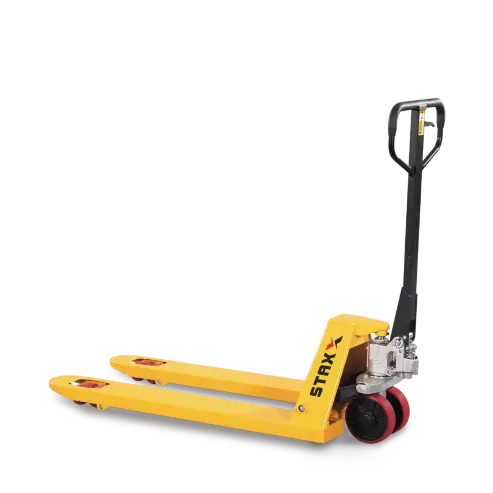 Hand Pallet Trucks
Hand Pallet Trucks Special Pallet Trucks
Special Pallet Trucks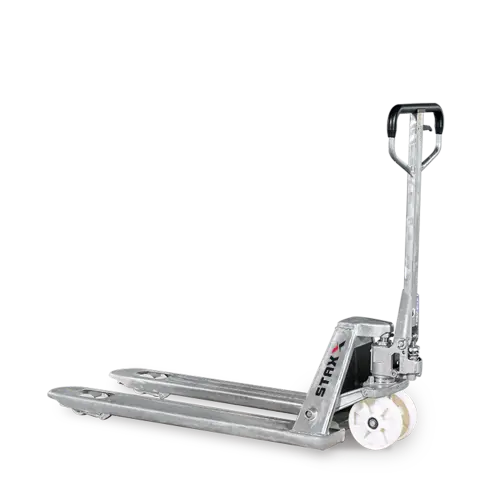 Galvanized and Inox Series
Galvanized and Inox Series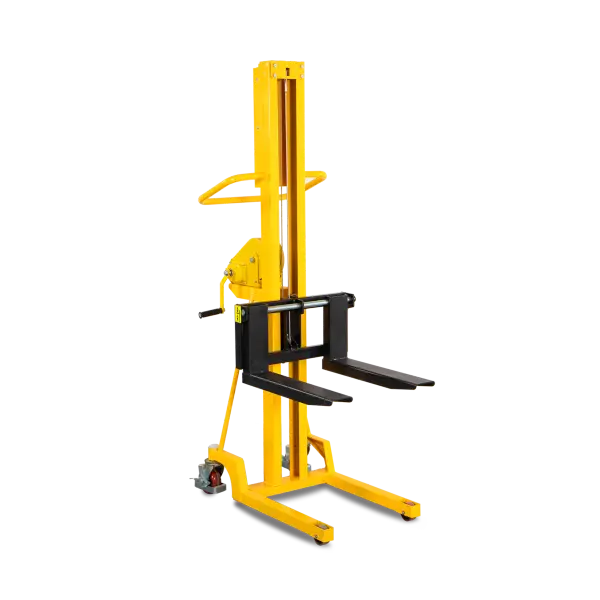 Easy Lift Service
Easy Lift Service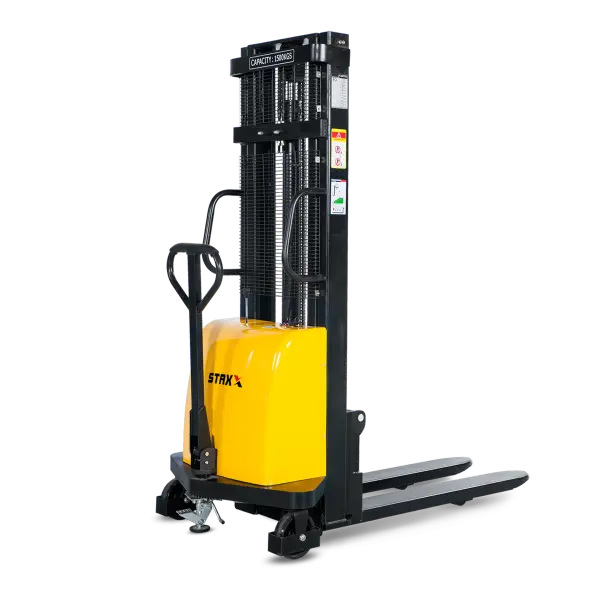 Manual Stackers
Manual Stackers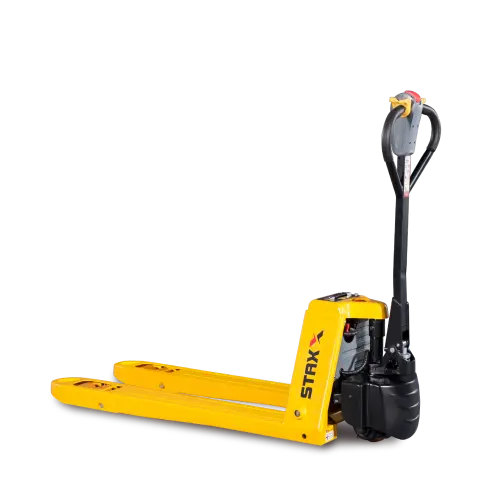 Electric Pallet Truck
Electric Pallet Truck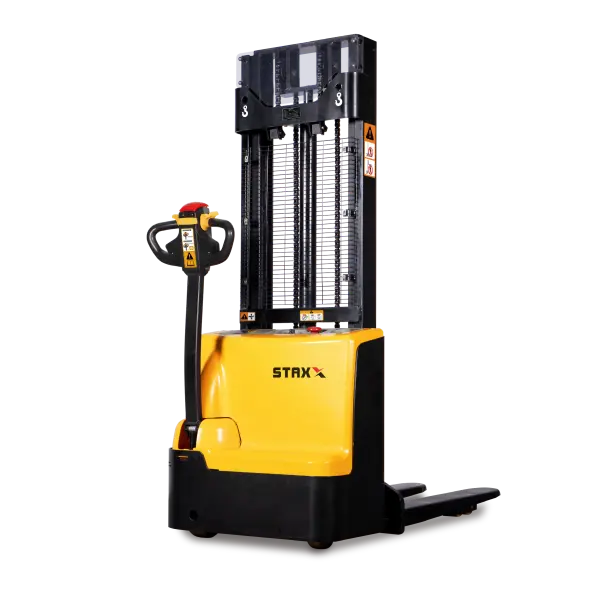 Electric Stackers
Electric Stackers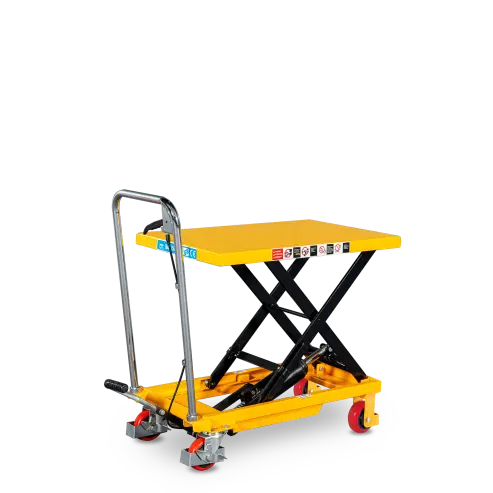 Lift Table
Lift Table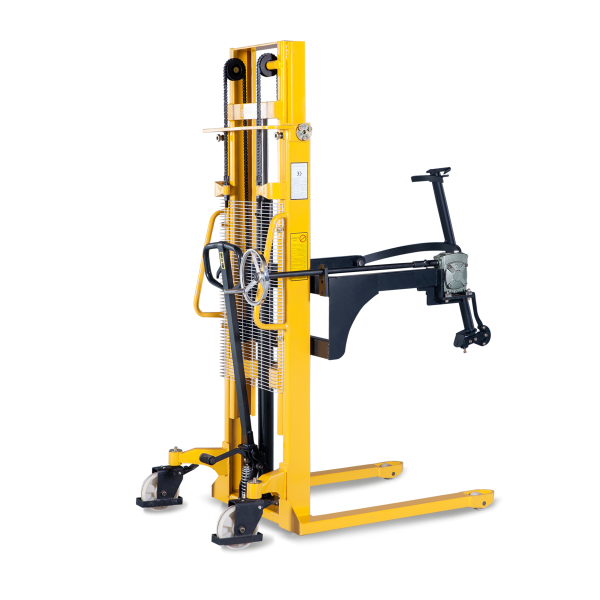 Drum Handling
Drum Handling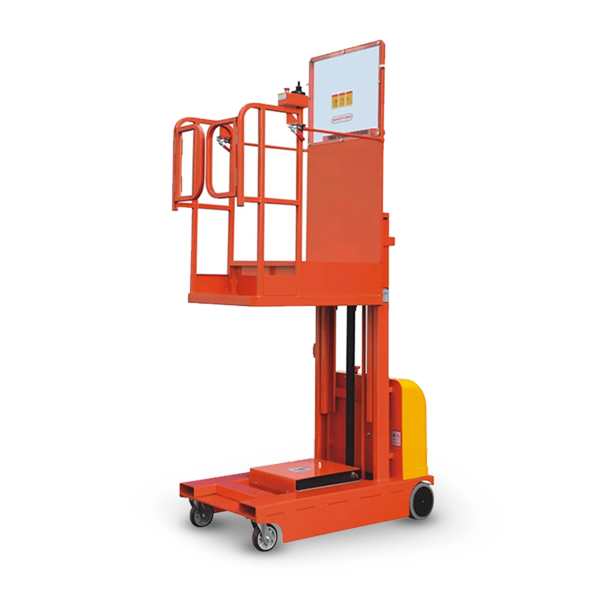 Others
Others


